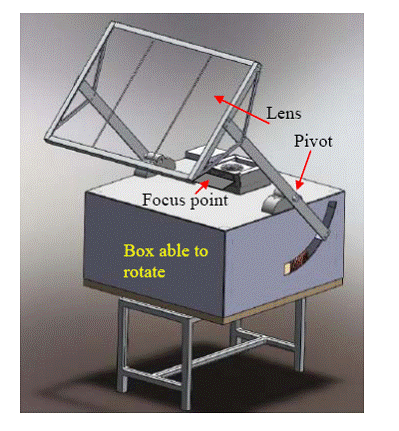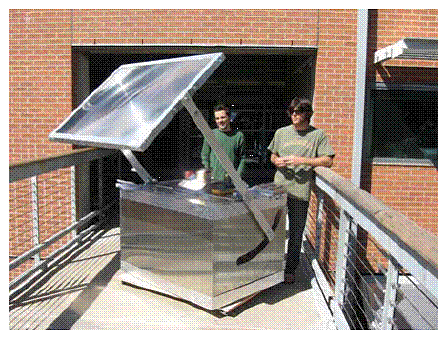Grantee Research Project Results
Final Report: User-friendly Solar Ovens for Outdoor and Indoor Use
EPA Grant Number: SU833914Title: User-friendly Solar Ovens for Outdoor and Indoor Use
Investigators: Li, Peiwen
Institution: University of Arizona
EPA Project Officer: Hahn, Intaek
Phase: I
Project Period: August 15, 2008 through August 14, 2009
Project Amount: $10,000
RFA: P3 Awards: A National Student Design Competition for Sustainability Focusing on People, Prosperity and the Planet (2008) RFA Text | Recipients Lists
Research Category: Pollution Prevention/Sustainable Development , P3 Awards , P3 Challenge Area - Air Quality , Sustainable and Healthy Communities
Objective:
These students contributed to this project: Abdulla Albinali, Kamal Alhamidi, Matt Morgan, M M Valmiki, Jeremy Wagoner; Department of Aerospace and Mechanical Engineering, The University of Arizona, Javier Heyer; Department of Optical Sciences & Engineering
Collecting sunlight for cooking has long been envisioned as one of the most favorable benefits that human beings can take from the sun. No doubt, safe and reliable solar cooking devices have great significance to the sustainability of environment and economy all over the world, particularly, to the developing world where people use biofuel or forest wood for cooking and heating. Unfortunately, it has been seen so far that solar cooking is mostly based on parabolic concentrators. When cooking with a reflective solar collector, people are often close to a strong and concentrated sunlight, which may cause considerable safety issues involving both burns and blinding. Furthermore, traditional solar cookers do not allow for much control of surface temperatures or sun location tracking and can only be used outdoors. Obviously, there are still no well-developed commercial-grade solar cooking devices that have high reliability and safety. On the other hand, with less and less fossil fuel being available, a huge demand of using solar energy for cooking and heating is inevitable in the future.
Summary/Accomplishments (Outputs/Outcomes):





Conclusions:
Supplemental Keywords:
Solar cooking, Renewable energy, SustainabilityRelevant Websites:
http://www.ame.arizona.edu/faculty/li/li.phpThe perspectives, information and conclusions conveyed in research project abstracts, progress reports, final reports, journal abstracts and journal publications convey the viewpoints of the principal investigator and may not represent the views and policies of ORD and EPA. Conclusions drawn by the principal investigators have not been reviewed by the Agency.
